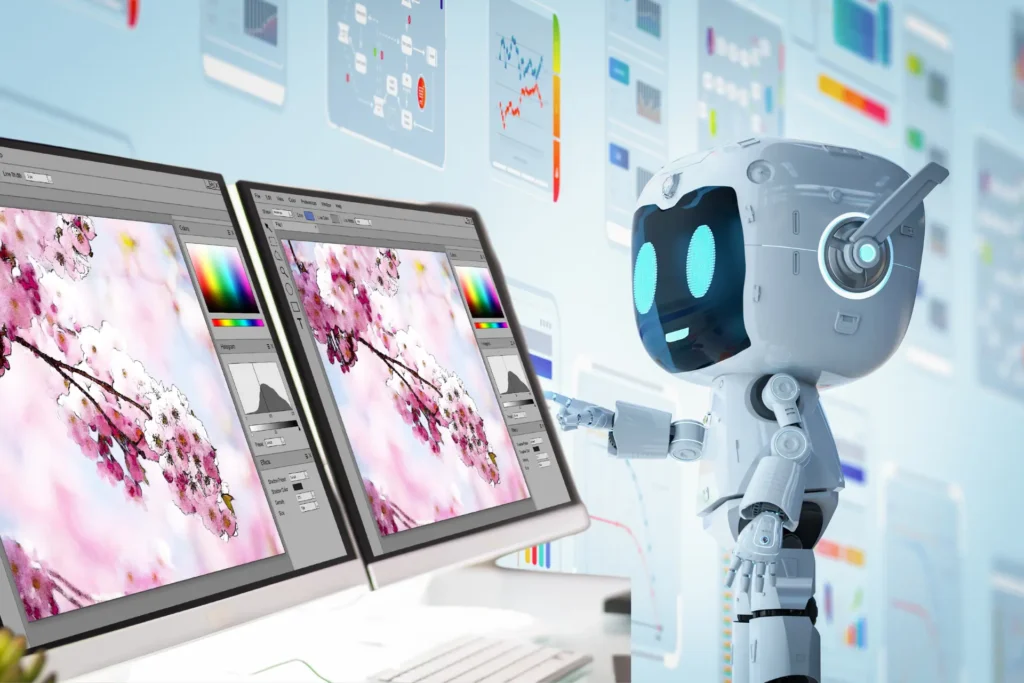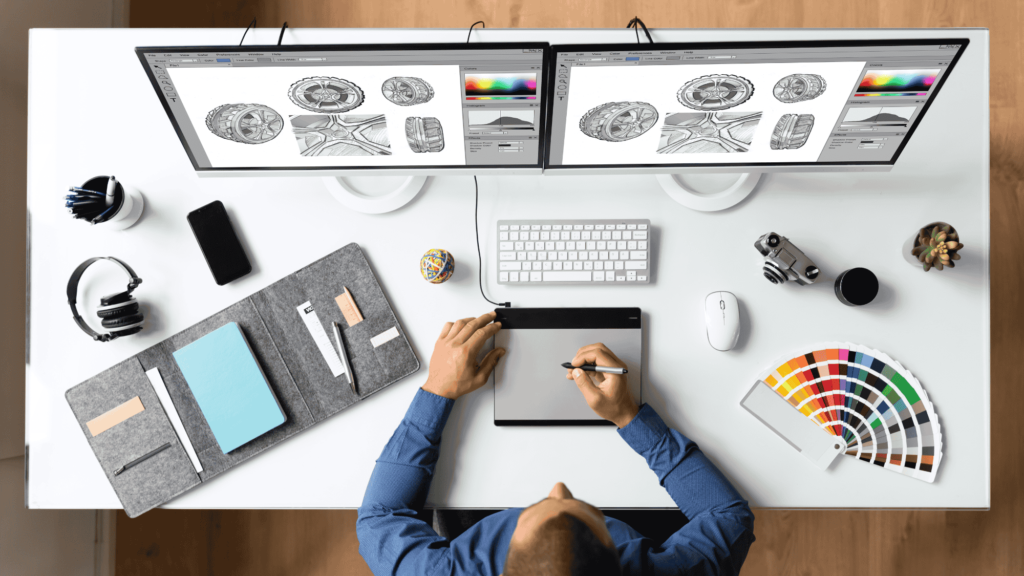5 Powerful Ways AI in Graphic Design Transforms Workflows
The rise of artificial intelligence in graphic design has been nothing short of transformative. From assisting with ideation to reducing repetitive processes, artificial intelligence in design is changing the way designers work. This change is assisting creative professionals in meeting demand by allowing them to focus on the enjoyable aspects of their employment while AI technologies in design handle some of the heavy lifting. Are you curious about how AI in graphic design might enhance your creative process? Let’s look at the primary ways it’s reshaping the industry.👉 Related article: How to Use AI in Design: A Guide for Modern Designers 1. Automating Repetitive Tasks with AI Imagine saying goodbye to the many hours spent resizing photographs and organizing assets. AI-powered graphic design automation now allows for the completion of these time-consuming processes in seconds. Tools like Adobe Sensei and Canva’s Magic Resize help designers save time by automating repetitive tasks. This allows designers to concentrate on creative areas like as color choices and layout without being weighed down by minutiae. Graphic design automation technologies are invaluable to people in charge of huge projects. They don’t just help you do jobs faster; they also limit the possibility of human error. With the time saved, designers can revisit and enhance their thoughts, resulting in higher-quality work. 2. Enhanced Ideation and Concept Development When it comes to brainstorming, AI tools for design can spawn unexpectedly innovative ideas. Tools like DALL-E and Midjourney use artificial intelligence in graphic design to generate rapid visuals based on prompts, which can be a great place to start for brainstorming sessions. Need inspiration for color schemes, shapes, or even fonts? These tools can generate options that help jumpstart the creative process. AI in graphic design allows designers to experiment with concepts that might not arise during conventional brainstorming. Not only does this save time, but it also enables designers to push their creative boundaries by leveraging creative AI technologies that provide new views. 3. Personalizing Design at Scale Creating tailored content is critical in today’s competitive landscape. AI for creatives enables designers to create bespoke images for various audience segments, which can be transformative for agencies and businesses. Platforms such as Tailor Brands employ AI to create logos and branding materials that meet certain requirements, and it’s never been easier to personalize designs based on user data. This AI element in graphic design enables large-scale customisation, allowing brands to keep a consistent look and feel across several customer touchpoints. For designers, it’s like having an extra set of hands to deliver high-quality designs faster and more efficiently. 4. Intelligent Design Recommendations With AI in design, feedback is now instantaneous. Tools like Adobe’s Auto Reframe and Palette.fm assess your design and give real-time recommendations. They can provide suggestions for enhancing compositions, new color schemes, and even estimate how well a design will work based on previous trends. These insights enable designers to develop more effective and appealing images. AI in graphic design enables wiser design recommendations, eliminating the need for trial and error while guiding designers to their best work. This has been especially useful for newer designers who wish to learn rapidly while honing their eye for good design decisions. 5. Enhanced Workflow and Collaboration AI’s impact extends beyond the individual designer’s experience to boost team collaboration. Some creative AI technologies interact seamlessly with popular platforms such as Adobe Creative Cloud and Figma, allowing team members to share ideas, provide input, and iterate on designs in real time. Automated version tracking and AI-driven updates significantly lessen the danger of losing work, allowing teams to stay on track across projects. In today’s fast-paced creative contexts, AI-enhanced workflows have become critical. AI has enabled design teams to collaborate and work more effectively, even under tight deadlines, by reducing bottlenecks and simplifying graphic design automation. 6. Embracing the AI Future of Graphic Design The use of AI in graphic design is not intended to replace human creativity, but to enhance it. AI has shown to be a beneficial tool for modern designers by automating monotonous activities, generating fresh ideas, and increasing cooperation. As AI tools in design evolve, the opportunities for innovation grow. So, if you’re a designer trying to improve your productivity and take your creativity to the next level, don’t be afraid to investigate what AI may offer you. Embracing AI in design may be the key to remaining competitive and motivated in the ever-changing field of graphic design. Are you ready to learn more about the latest design tools and trends? Read How AI Empowers Designers to Be More Creative and discover more resources to elevate your design journey with AI! Bring Your Vision to Life with Expert Graphic Design Services Our graphic design service combines creativity and expertise to deliver exceptional visuals tailored to your brand. From logos and branding to website graphics and marketing materials, we create designs that captivate your audience and leave a lasting impression. Explre Graphic Design Services







